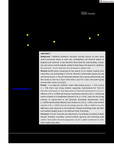A comparative study of the effect of the Time for Dementia programme on medical students
| dc.contributor.author | Banerjee, Sube | |
| dc.contributor.author | Jones, C | |
| dc.contributor.author | Wright, J | |
| dc.contributor.author | Grosvenor, W | |
| dc.contributor.author | Hebditch, M | |
| dc.contributor.author | Hughes, L | |
| dc.contributor.author | Feeney, Y | |
| dc.contributor.author | Farina, Nicolas | |
| dc.contributor.author | Mackrell, S | |
| dc.contributor.author | Nilforooshan, R | |
| dc.contributor.author | Fox, C | |
| dc.contributor.author | Bremner, S | |
| dc.contributor.author | Daley, S | |
| dc.date.accessioned | 2021-09-17T12:07:24Z | |
| dc.date.issued | 2021-07 | |
| dc.identifier.issn | 0885-6230 | |
| dc.identifier.issn | 1099-1166 | |
| dc.identifier.other | gps.5532 | |
| dc.identifier.uri | http://hdl.handle.net/10026.1/17816 | |
| dc.description.abstract |
<jats:title>ABSTRACT</jats:title><jats:sec><jats:title>Background</jats:title><jats:p>Traditional healthcare education typically focuses on short block clinical placements based on acute care, investigations and technical aspects of diagnosis and treatment. It may therefore fail to build the understanding, compassion and person‐centred empathy needed to help those with long‐term conditions, like dementia. Time for Dementia was developed to address this.</jats:p></jats:sec><jats:sec><jats:title>Method</jats:title><jats:p>Parallel group comparison of two cohorts of UK medical students from universities, one participating in Time for Dementia (intervention group) and one not (control group). In Time for Dementia students visit a person with dementia and their family in pairs for 2 hours three times a year for 2 years, the control group received their normal curriculum.</jats:p></jats:sec><jats:sec><jats:title>Results</jats:title><jats:p>In an adjusted multilevel model (intervention group <jats:italic>n</jats:italic> = 274, control <jats:italic>n</jats:italic> = 112), there was strong evidence supporting improvements for Time for Dementia participants in: total Approaches to Dementia Questionnaire score (coefficient: 2.19, <jats:italic>p</jats:italic> = 0.003) and its person‐centredness subscale (1.32, <jats:italic>p</jats:italic> = 0.006) and weaker evidence in its hopefulness subscale (0.78, <jats:italic>p</jats:italic> = 0.070). There was also strong evidence of improvement in the Dementia Knowledge Questionnaire (1.63, <jats:italic>p</jats:italic> < 0.001) and Dementia Attitudes Scale (total score: 6.55, <jats:italic>p</jats:italic> < 0.001; social comfort subscale: 4.15, <jats:italic>p</jats:italic> < 0.001; dementia knowledge subscale: 3.38, <jats:italic>p</jats:italic> = 0.001) scores. No differences were observed on the Alzheimer's Disease Knowledge Scale, the Medical Condition Regard Scale or the Jefferson Scale of Empathy.</jats:p></jats:sec><jats:sec><jats:title>Discussion</jats:title><jats:p>Time for Dementia may help improve the attitudes of medical students towards dementia promoting a person‐centred approach and increasing social comfort. Such patient‐focused programmes may be a useful complement to traditional medical education.</jats:p></jats:sec> | |
| dc.format.extent | 1011-1019 | |
| dc.format.medium | Print-Electronic | |
| dc.language | en | |
| dc.language.iso | en | |
| dc.publisher | Wiley | |
| dc.subject | Alzheimer&apos | |
| dc.subject | s disease | |
| dc.subject | dementia | |
| dc.subject | healthcare education | |
| dc.subject | Longitudinal Integrated Clerkships | |
| dc.subject | long‐ | |
| dc.subject | term conditions | |
| dc.subject | multimorbidity | |
| dc.subject | senior mentorship programs | |
| dc.title | A comparative study of the effect of the Time for Dementia programme on medical students | |
| dc.type | journal-article | |
| dc.type | Journal Article | |
| dc.type | Research Support, Non-U.S. Gov't | |
| plymouth.author-url | https://www.webofscience.com/api/gateway?GWVersion=2&SrcApp=PARTNER_APP&SrcAuth=LinksAMR&KeyUT=WOS:000634111900001&DestLinkType=FullRecord&DestApp=ALL_WOS&UsrCustomerID=11bb513d99f797142bcfeffcc58ea008 | |
| plymouth.issue | 7 | |
| plymouth.volume | 36 | |
| plymouth.publication-status | Published | |
| plymouth.journal | International Journal of Geriatric Psychiatry | |
| dc.identifier.doi | 10.1002/gps.5532 | |
| plymouth.organisational-group | /Plymouth | |
| plymouth.organisational-group | /Plymouth/Faculty of Health | |
| plymouth.organisational-group | /Plymouth/Faculty of Health/Peninsula Medical School | |
| plymouth.organisational-group | /Plymouth/Faculty of Health/Peninsula Medical School/PMS - Manual | |
| plymouth.organisational-group | /Plymouth/REF 2021 Researchers by UoA | |
| plymouth.organisational-group | /Plymouth/REF 2021 Researchers by UoA/UoA03 Allied Health Professions, Dentistry, Nursing and Pharmacy | |
| plymouth.organisational-group | /Plymouth/Users by role | |
| plymouth.organisational-group | /Plymouth/Users by role/Academics | |
| plymouth.organisational-group | /Plymouth/Users by role/Researchers in ResearchFish submission | |
| dc.publisher.place | England | |
| dcterms.dateAccepted | 2021-03-04 | |
| dc.rights.embargodate | 2021-12-3 | |
| dc.identifier.eissn | 1099-1166 | |
| dc.rights.embargoperiod | Not known | |
| rioxxterms.versionofrecord | 10.1002/gps.5532 | |
| rioxxterms.licenseref.uri | http://www.rioxx.net/licenses/all-rights-reserved | |
| rioxxterms.licenseref.startdate | 2021-07 | |
| rioxxterms.type | Journal Article/Review |


